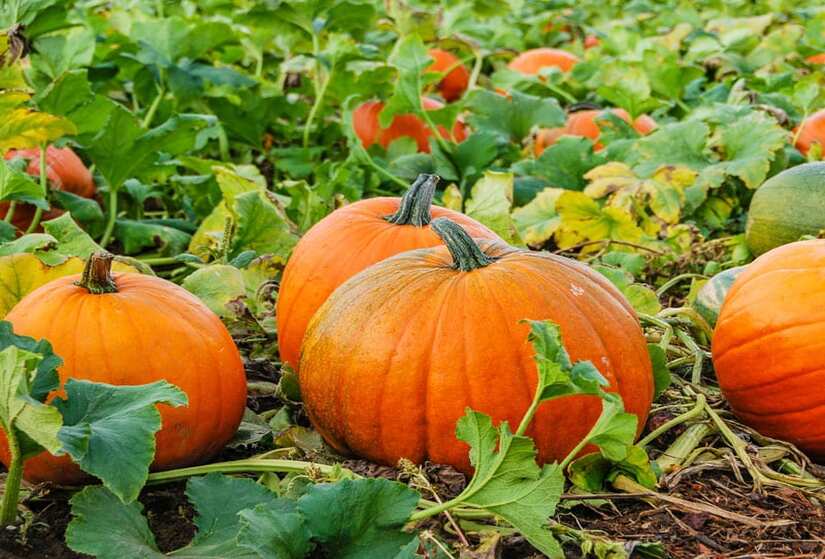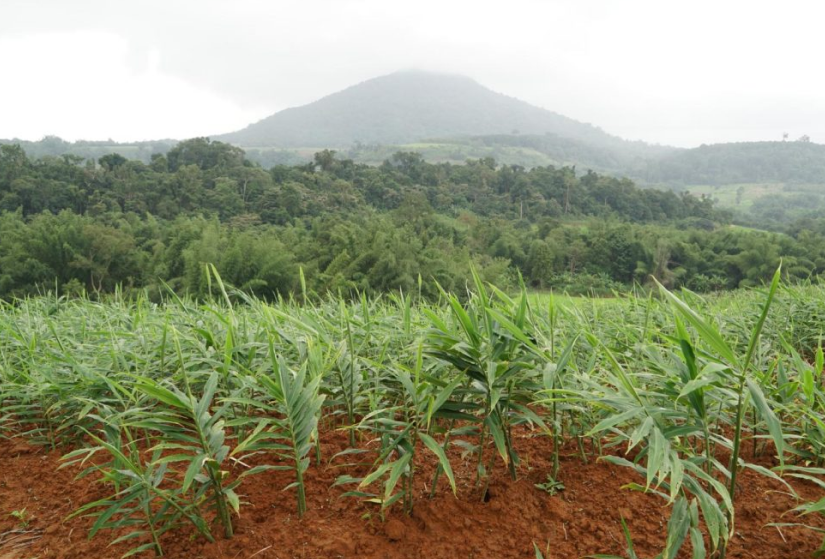
Growing and Handling Pumpkins
Pumpkin (Curbita spp.) is a well-known plant in North American gardens, a type of squash that represents autumn by being used in imaginative Halloween jack-o-lantern carving or as a filling for delectable Thanksgiving pies. While most people associate pumpkins with enormous, spherical orange fruits with ribbed rinds, pumpkins also come in white, red, pink, and blue colors, also with rinds that can be smooth, lumpy, oval, flat, or round. All pumpkins are winter squash, yet some are only produced for decoration. Most home-grown pumpkins are cultivars or hybrids of the Curbita pepo species, however other pumpkin species, such as C. maxima, C. argyrosprema, and C.moschata, may be encountered. The species readily cross-pollinate, and many commercial variations are hybrid kinds that have been carefully produced.
Characteristics

Mature Size
22 to 45 cm tall; 300 to 450 cm spread

Sun Exposure
Full sun

Soil Type
Rich, moist, loamy

Soil pH
Slightly acidic (6.0 to 6.8)

Bloom Time
annual

veg. color
white, red, pink, and orange
Environmental Footprint
Varieties and differences
‘Lumina’ is a white variety with an excellent peel for carving that is also wonderful for baking.
Because of its sweet, fine-grained meat, ‘Sugar Pie’ is ideal for pies. This kind may be used in stews and soups.
The name ‘Cinderella’ comes from the deep-ribbed gourd that transforms into Cinderella’s carriage in the famous animated film. It boasts thick, custard-like flesh that works nicely in a variety of recipes.
Fertilizer
Pumpkins require a lot of food to grow their long vines and enormous fruit. Feed on a regular (every two weeks) basis, commencing with a high-nitrogen fertilizer whenever the plants are around 30 cm tall to promote healthy leaf growth. To encourage fruit growth, change to a high-phosphorus fertilizer just before the plants begin flowering.
Soil
Pumpkins prefer well-drained soil. Before planting, a substantial quantity of natural material, such as compost or peat moss, should be mixed in. The pH of the soil should be somewhat acidic, ranging from 6.0 to 6.8.
Water
Water your crops at least 2 to 5 cm every week, more if they’re blossoming or setting fruit. Rather than watering from above, drip watering or ground-level soaking should be used.
Light
To grow and ripen their fruits, pumpkins (and other squash) require full light.

Humidity and temperature
Pumpkins, like other squash, require a lot of heat to yield healthy fruit. Pumpkins thrive in temperatures ranging from 18 to 35 degrees Celsius. When paired with heat, extremely humid circumstances can enhance the growth of fungus illnesses.
Harvesting
Pumpkins have an extended growing season. Most require about 90 and 110 days to develop. If you reside in a short-season environment, select a species that will have enough time to grow in your garden.
If you hurry the harvest, your pumpkins will not survive long or taste good. Wait until the coloring is consistent and the shell does not dent when touched with your fingertip. The vines should also have started to dry and shrivel at this stage. Keep an eye out for the browning of the tendril nearest to the pumpkin. This is the best time to harvest.
Pumpkins may resist minor colds, but they should always be harvested before a strong frost. With a pruner, cut them from the vines, leaving 5 at 10 cm of stem. This isn’t just a handle; it is there to aid in the cure of the pumpkin and to prevent illness from infiltrating where the stem meets the pumpkin. Make an effort not to cut it off.
Recipe Description

Pumpkin soup
Ingredients
- 1.5 kg of pumpkins
- 1 onion
- 3 carrots
- 2 potatoes
- 100 g liquid cream
- 50 g butter
- 1 poultry stock cube
- parsley, salt, pepper, and nutmeg

Servings
6 people

Prepping time
10 min

Cooking time
40 min
- Peel all the vegetables, wash them and cut them into large pieces.
- Melt the butter in a pan and fry the vegetables. Brown them slightly.
- Cover with water, add the chicken stock cube, salt and pepper.
- When the first broth arrives, reduce the heat and simmer for 40 minutes.
- Blend the mixture. Add the crème fraîche, chopped parsley and grated nutmeg.
Order Plant Food in our Shop!
Shop NowFAQ
How long would it take broccoli to grow?
Is it simple to produce broccoli?
Broccoli is pretty simple to cultivate as long as you plant it at the right time to avoid being exposed to severe heat. You must also ensure that there is enough moisture and nutrients from the soil.






